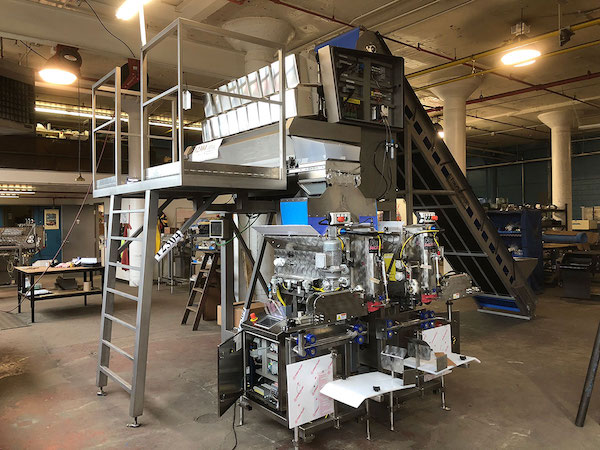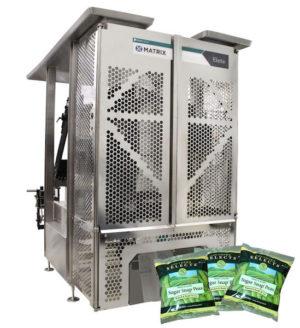COVID shows need for flexibility in packaging
If the COVID-19 crisis taught us anything it’s that preparing for the unexpected is crucial to the success of any business.
Over the last year and half, food processors, in particular, found themselves struggling to respond to quickly changing demand. Factors driving change include the growth of e-commerce, increased focus on hygiene, and continued efforts towards sustainability. Three packaging companies share their pandemic experiences, providing valuable insight into ways to future-proof your company.
E-commerce sees incredible growth
One of the main factors driving change in packaging is the growth of e-commerce, a sector that was already seeing tremendous growth before COVID threw the world into chaos. A UK study shows that 83% of Brits plan to continue to shop online at the same rate or more after the pandemic. We can expect much the same trend in other parts of the world.
As a result, many food processors will need to include different sized packaging to meet both retail and consumer demands. U.S.-based machinery company Matrix has seen a great deal of expansion in the e-commerce channel with end users looking for pre-packaged meal options.
“Specifically, we are seeing an increase in the number of pre-packed meals companies looking to provide end users with all the ingredients they need to create their own fresh meal at home with minimum hassle,” said Shawn Varela, Matrix regional sales representative. “This, in turn, expanded the need for gel and fresher packs used to ship the fresh items to the customer.”
Fox Packaging also saw a tremendous shift in the packaging sector during the height of the pandemic. Across the supply chain, prices increased and film was not readily available. But at the same time, demand shifted and rose at a remarkable pace. And although Fox Packaging’s expertise is mostly in fresh produce, flexible packaging applications continue to expand to new product lines and types, said Craig Fox, vice president of sales.
“The stand-up pouch bag is a storeshelf staple that has transitioned to e-commerce, as it is a convenient design for store presentation and shipping,” he said.

Focus on hygiene drives packaging sector
COVID-19 has also heightened awareness around hygiene, as consumers worry about the risks associated with the many hands that touch the products they’re consuming. Packaging companies have responded en force by adding new tamper-proof solutions that provide retailers and consumers with the reassurance they need. Jason Angel, vice president of sales and marketing at Ossid, a North Carolina-based company that manufactures packaging equipment, said there are benefits to offering this type of packaging. First, no one else can touch the produce. It’s convenient and compact with a pre-priced label that shows consumers how much they are spending, and the product stays fresher longer.
“This is also valuable from the retailer’s viewpoint, as this packaging creates easy bundle packs for display, decreases waste from transport, and increases item quantity sold,” said Angel.
Fox Packaging customers have expressed similar concerns about hygiene. “As consumers become increasingly aware of the touch points of their produce, packaging has served as a protective barrier that keeps produce untouched and offers peace of mind,” said Fox.
In the UK, cardboard packaging company DS Smith is working to develop virus-resistant packaging that uses an anti-microbial coating to provide consumers with additional safeguards.
“Whilst it would never replace good hygiene practices and due care, this technology has the potential to bring a real and proven additional layer of protection to our customers and their consumers as packaging moves across the supply chain,” said Alan Potts, design and innovation director for DS Smith.
Has COVID made packaging less sustainable?
Increased reliance on packaging seems, at first glance, like a step in the wrong direction. But packaging solution providers don’t see it that way. In the UK, for instance, DS Smith and market research provider Ipsos MORI found that despite the global crisis, 85% of consumers expressed a desire for products that used as little packaging as possible. The study also revealed that consumers continue to prioritize sustainable packaging solutions.
Fox Packaging sees this as an important area of focus going forward. “Sustainability did not take a back seat,” said Fox. “Our team prioritized research of material types and design optimization.”
“By using this data and reinforcing our supplier relationships, we are improving the efficiency of our product line,” he added.
Both Ossid and Matrix have put sustainability high on their list of priorities going forward too. Both companies offer equipment that can run sustainable packaging that’s made of recycled materials and can be recycled or composted.
Possible avenues for growth

of 130 units per minute and is great for when
hygienic bagging is required. Photo: Matrix
Beyond e-commerce, hygiene and sustainability, there are other factors driving growth as well. One area of expansion is packaging for alternative meal options for consumers who are either hesitant about eating in restaurants or travel restricted.
“End users are looking for chef-designed, ready meals available in the grab-n-go cooler at grocery stores, convenience stores, hospitals, school campuses and hotels,” said Angel.
Typically, these meals are vacuum skin packed in trays on a tray sealer. Consumers like that they are microwave ready.
At Matrix, Varela said their end users are looking to produce more single-serve packages as well.
“End users are requesting more single-serving sizes to help keep items fresher longer – you only open up one small bag versus a larger bag that goes bad quicker,” he said. “This also provides less cross-contamination while keeping product fresher.”
Experts at Fox Packaging, Matrix and Ossid all offer the same advice: They encourage their customers to work closely with their packaging and equipment suppliers. Looking forward, viewing them as project partners rather than simple suppliers will create the best recipe for flexibility and success.
Top photo courtesy of Fox Packaging.







